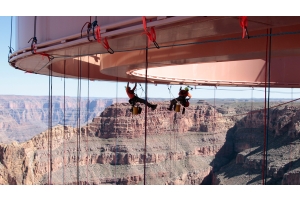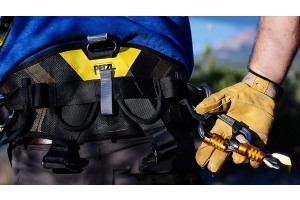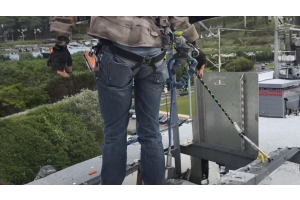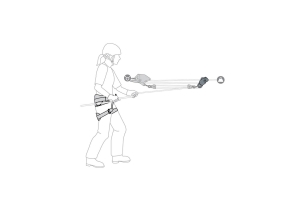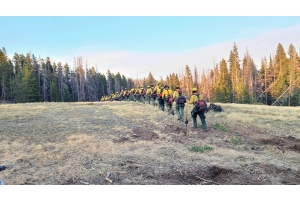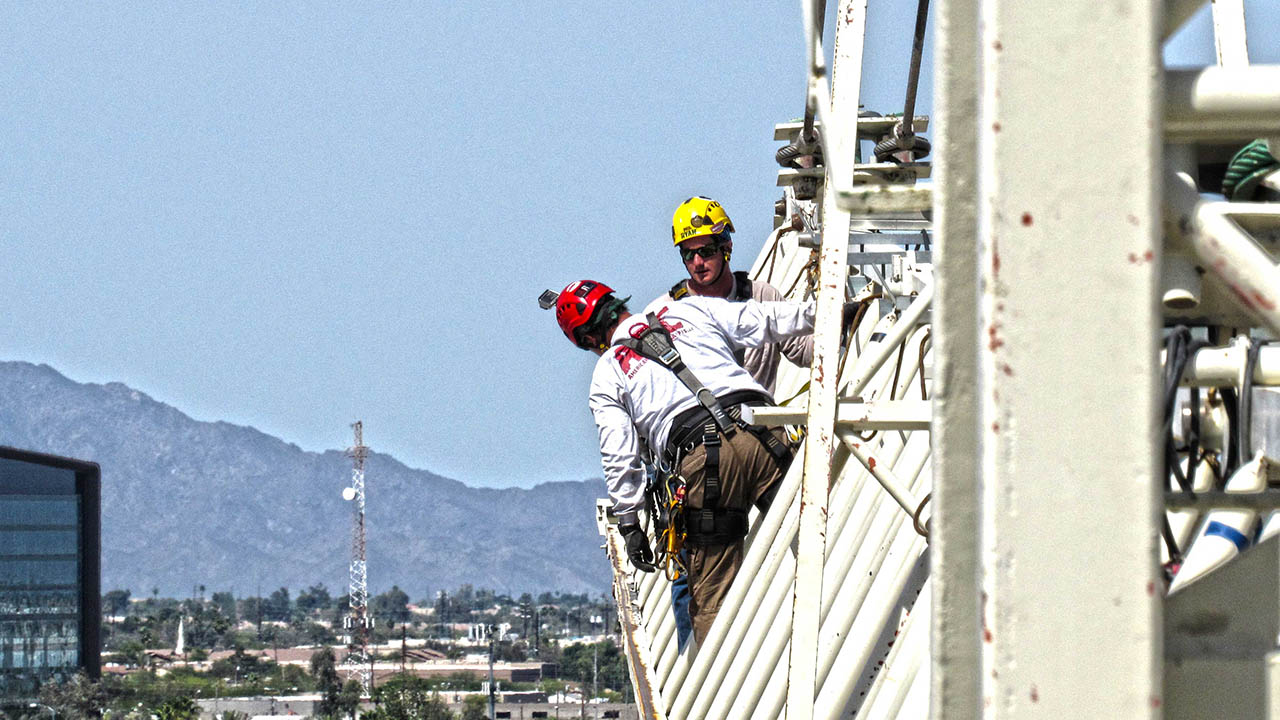
Compliance Is All Over the Board.
I just came from a standby rescue job at a power plant just outside Phoenix. You enter a gate and are directed by security to check in to the front office. We sign in for who we are, who we represent and what we are doing on site. We then are escorted to a room for a video introduction to the plants safety procedures, 45 minutes of mind-numbing safety regulations such as PPE, Safety Glasses, Steel toe boots worn 100% of the time outside of office. We were assigned a safety officer and given radios and instructions on its use and to whom they would be communicating with for a given emergency.
Then we went the control room and had a safety debrief for the task to be accomplished. They began with trips, slips and falls, pinch pts, etc.. Again we are reminded that PPE is to be worn 100% of the time outside of office…Safety glasses, steel toe boots, etc.. They left no stone unturned including a rescue plan and where everyone was to evacuate to in case of emergency.
I work with another company where management takes safety for granted. Management seems to be lacking the understanding how safety effects all of us who work for that organization. Why should staff comply? Management tells them that the required equipment is expensive to buy, it slows the crews down and the guys don’t like using all the fall protection equipment because they say it makes them less safe.
In work with those employees, I find they are proactive for their personal safety and only just recently were bought proper PPE, but to a large degree they still lack the knowledge for what OSHA means by regulating 100% fall protection and what the proper PPE is that they need to comply with.
So as I look at both sides of the argument, it’s clear who is aware of the end results for safety.
OSHA looks at A LOT of industries and relies on them to give OSHA the guidelines that the industry should be following so that OSHA can regulate and support compliances by overseeing adherence to those industries. They are also the authority to write citations for violations so if it were your company that would be sited, would you want OSHA to be tough or soft handed? Since many companies are not complying with OSHA regulations, then I see a change in how OSHA handles violations in the future.
ANSI Z359.0-18 is a guiding light OSHA uses for industry PPE and Fall Protection standards. First you have Company one Power plant - No documented accidents after 18 years doing business on site. At the other end of the spectrum you have Company two which had an avoidable fatality and numerous documented accidents with major injuries over the years. Then you have everyone in-between trying to wade through all the conflicting information, some walking away more confused than when they came.
Who is right, who is wrong and who doesn’t even care is not my concern. My concern is that I come home to my family everyday regardless if my employer prepares me for working at height for my job. It is first and foremost MY responsibility to be safe! I will seek out how to be safer even if my employer holds my personal safety in such low regard and doesn’t provide both PPE and “Proper Training” to correctly use all my PPE, which is the law of the land and it does NOT relegate my personal responsibility for myself and family.
I recently read an article about OSHA and how they will be enforcing regulations and how they will hand out larger fines for violators in the future and how that those fines could become potentially devastating for those who don’t understand the importance for employers to comply with OSHA regulations. Arizona was investigated by OSHA because it has been consistently reducing those fines. Here are some of the OSHA investigation highlights I found interesting:
- OSHA investigation found Industrial Commission of Arizona’s practice of arbitrarily reducing employers’ penalties for safety violations is undermining the deterrent power of those penalties and is not permitted under existing policies.
- OSHA investigation also determined the governor-appointed commission “has been operating outside of its legal authority” by reclassifying the severity level of safety violations recommended by inspectors at the Arizona Division of Occupational Safety and Health, or ADOSH.
- OSHA investigation into the Industrial Commission was prompted by a number of complaints from the public
- 2017 Star investigation found the ICAroutinely reduces those penalties and reclassifies violations, often without clear justification.
- The cuts sometimes occur after the employer attends the commission’s public meetings and requests a penalty reduction.
- The Star’s 2016 analysis of ICAmeeting minutes found 139 penalty proposals reviewed 01/16 – 11/16 got reduced by a total of more than $186,000.
- Commissioners voted to reduce ADOSH’s recommended penalties in more than half of the cases they reviewed in that period
- Arizona is one of 26 states with a state-level occupational safety and health enforcement program
- Under Arizona’s agreement with federal OSHA, the ICA is permitted to review recommended penalties and to ensure any penalty reductions have been correctly applied using pre-defined criteria.
- Those criteria are outlined in ADOSH’s field operations manual, or FOM.
- OSHA investigation found ICA gave additional reductions after those formula-based cuts had already been calculated and applied by ADOSH
- ICA Spokesman says declining workplace injury rates in Arizona shows ICA strategy is effective ORIGINAL COMPLAINT
- Federal OSHA sent formal complaint to ICA 12/18
- Cited 10 cases in which ICAmembers voted to reduce penalties or to downgrade the severity level of violations
- ICA defends policy as Arizona statute gives “broad authority” to the commission to assess all civil penalties
- Cited 10 cases in which ICAmembers voted to reduce penalties or to downgrade the severity level of violations
- Federal OSHA recommended state propose changes to its state OSHA plan to define the role of ICA and explain the criteria it uses to approve and adjust proposed citations to be submitted to federal OSHA for approval
- The letter directs ICA to stop reclassifying the violations cited by ADOSH.
- Workplace-safety advocates say high penalties for violations are a crucial deterrent for employers who might look to save money by cutting corners on safety practices and equipment
- ADOSH doesn’t have enough inspectors to visit workplaces regularly, meaning hefty penalties for violations are even more necessary to keep workers safe
- Arizona’s ADOSH field workers would need 122 years to inspect each workplace in the state once, according to AFL-CIO’s most recent report on workplace fatalities.
Reading the last point about needing 122 years to inspect each workplace fatalities says it all.
What say you? What’s your observation on the OSHA investigation findings? How involved are you with your personal safety?
Sure it’s everyone’s reasonability but ultimately it’s your personal reasonability to yourself and those you love and those who love you.
An interesting read from the AFL-CIO’s most recent report on workplace incidents. You should check it out,
Gravity is an absolute law and does not discriminate!
Until next time....
SS, aka the Desert Piranha

